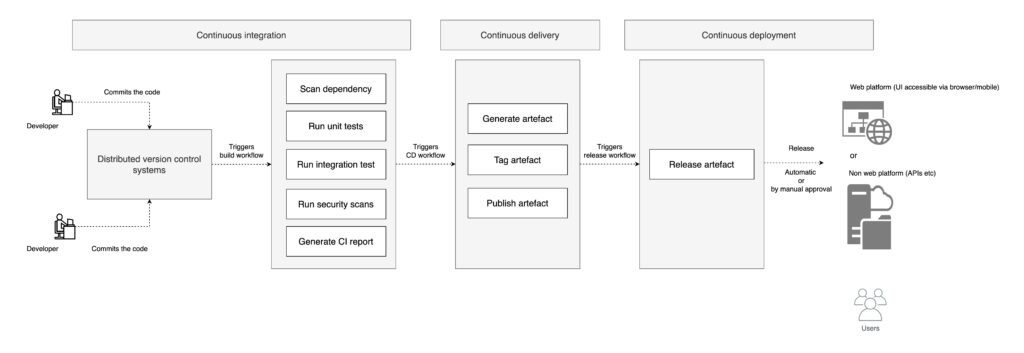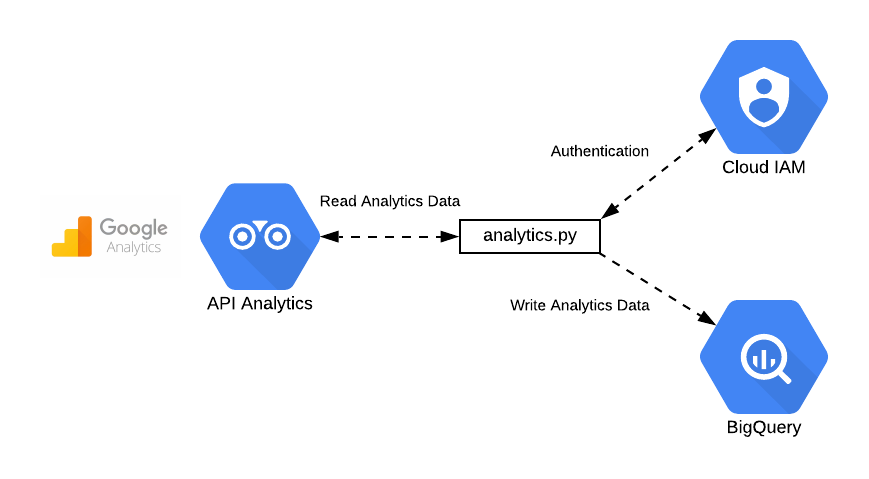In the world of software development, change is the only constant. Over the years, the way we build, test and deploy software has undergone a radical transformation. Traditional methods of software development and release are giving way to more efficient and agile approaches. One such transformative trend is the rise of continuous integration and continuous deployment (CI/CD). In this article, we will explore the evolution of software development practices, the principles behind CI/CD, and the significant impact it has on modern software engineering.
The evolution of software development
In the early days of software development, building and deploying software were manual and time-consuming processes. Developers wrote code independently, tested it on their local machines, and then handed it off to a separate team responsible for integration and deployment. This approach often resulted in long development cycles, compatibility issues and a lack of visibility into the entire development pipeline.
The arrival of the agile methodology in the early 21st century marked a significant shift in software development. Agile methodologies emphasised collaboration, frequent iterations and customer feedback. While Agile brought substantial improvements, it still relied on manual processes for building and deploying software. These manual steps introduced the risk of human error and hindered the rapid delivery of software.
The arrival of CI/CD
Continuous integration (CI), continuous delivery (CD) and continuous deployment (CD) emerged as a response to the shortcomings of traditional development practices. CI/CD is a set of principles and practices that automate and streamline the software development pipeline. Let’s break down the key components of CI and CD:
 Picture – A high level view of CI/CD process in a nutshell
Picture – A high level view of CI/CD process in a nutshell
Continuous integration (CI):
Frequent code integration: Developers integrate their code changes into a shared repository multiple times a day.
Automated testing: Automated tests are run after each code integration to detect and report issues early on.
Immediate feedback: Developers receive immediate feedback on the quality of their code, allowing them to fix issues promptly.
Version control: Code changes are tracked using version control systems like Git, enabling easy collaboration and rollbacks.
Continuous delivery (CD):
Generate and tag artefact: During this phase, an artefact is generated and a proper tag is generated.
Publish artefact: At this stage, an artefact is published into an artefact repository so that it can be consumed at later stages.
Continuous deployment (CD):
Automated deployment: Code changes that pass CI tests are automatically deployed to production or staging environments. Note that in big organisations, there is still a manual step involved in pressing the button for final deployment – this is because deployment requires a manual sign off in most cases.
Release pipelines: Define a series of automated steps for code to move from development to production.
Monitoring and feedback: Continuous monitoring of applications in production provides real-time feedback on performance and issues.
Rollbacks and blue-green deployments: Easy rollback mechanisms and blue-green deployments ensure minimal disruption in case of issues.
The advantages of CI/CD:
The adoption of CI/CD has brought several key advantages to modern software development:
Faster delivery:
CI/CD reduces manual intervention, allowing for rapid and automated
software delivery. New features and bug fixes can be deployed quickly,
giving businesses a competitive edge.
Higher quality:
Automated testing and immediate feedback help catch bugs early in the
development process, resulting in higher software quality.
Reduced risk:
CI/CD’s automated processes and version control reduce the risk of
human error in deployments. Rollbacks and blue-green deployments ensure
minimal disruption in case of issues.
Increased collaboration: Developers work in a shared environment, fostering collaboration and code reviews, leading to better code quality.
Improved transparency:
The entire development pipeline is visible, providing insights into the
status of each code change and fostering a culture of accountability.
Continuous improvement: Regular feedback and monitoring in production environments enable continuous improvement of software quality and performance.
Scalability: CI/CD pipelines can be easily scaled to handle larger and more complex projects.
Challenges and considerations:
While CI/CD offers many benefits, its adoption is not without challenges:
Cultural shift:
Transitioning to CI/CD often requires a cultural shift in an
organisation, with an emphasis on collaboration, automation and shared
responsibility.
Resource investment: Setting up and maintaining CI/CD pipelines requires time and resources.
Security:
Security must be integrated into CI/CD processes to ensure that
vulnerabilities are not introduced during development and deployment.
Legacy Systems: Adapting CI/CD for legacy systems can be challenging, but it is possible with careful planning.
Conclusion
The rise of CI/CD has revolutionised software development, making it faster, more reliable and more efficient. It aligns with the principles of Agile and DevOps, emphasing collaboration, automation, and continuous improvement. While adopting CI/CD may require overcoming challenges and cultural changes, the benefits in terms of speed, quality and innovation are well worth the effort. As software development continues to evolve, CI/CD remains a key driving force in shaping the future of the industry.
Find out more about GFT’s software development capabilities here









